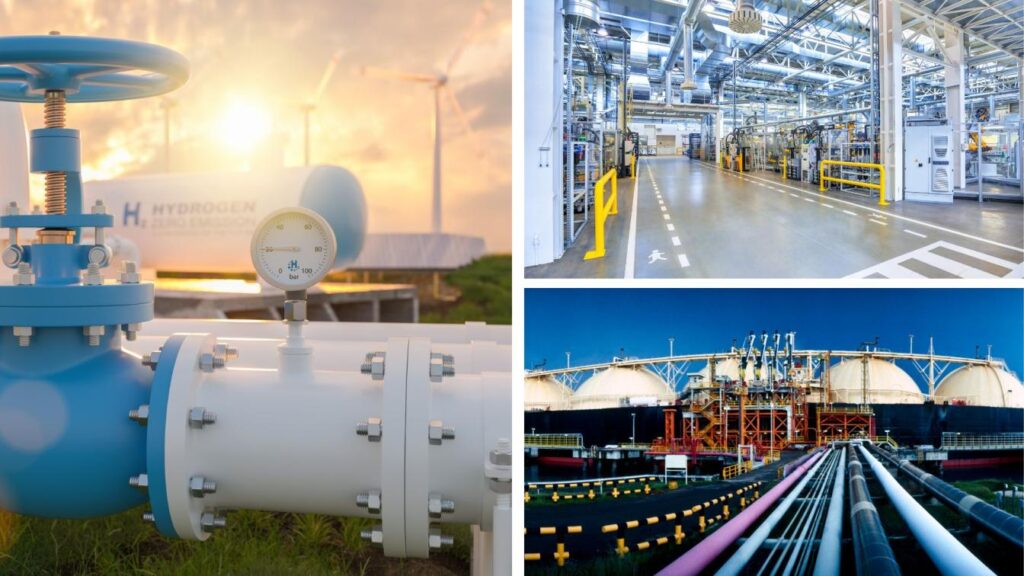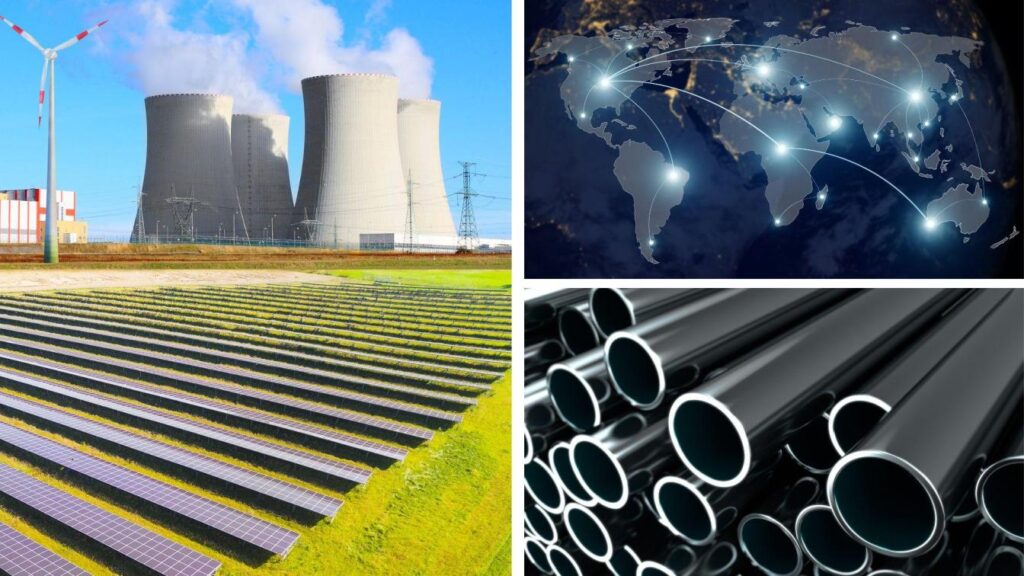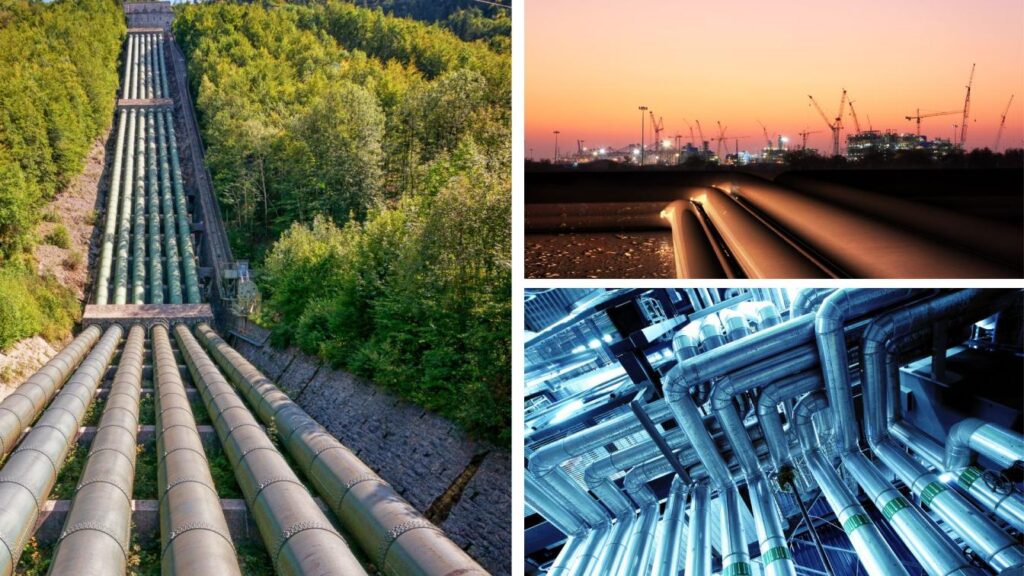Methane is a potent greenhouse gas that contributes significantly to climate change. In fact, over a 20-year period, methane traps about 80 times more heat in the atmosphere than carbon dioxide. The oil and gas industry, particularly natural gas pipelines, is a major source of methane emissions. Leaks from these pipelines not only accelerate global warming but also pose serious safety risks. At Nexa Pipe, we understand the urgency of addressing this critical issue. As a leader in pipeline technology, we have developed cutting-edge solutions to prevent methane leaks and mitigate their impact on the environment. Our team of experts brings decades of experience in materials science, manufacturing, and pipeline infrastructure to tackle this complex challenge head-on.

The Scope of the Problem
The United States has an extensive network of over 3 million miles of natural gas pipelines. According to the Environmental Defense Fund, these pipelines leak between 1.2 and 2.6 million tons of methane annually. That’s equivalent to the greenhouse gas emissions from 50 million passenger vehicles. Pipeline leaks occur due to various factors, including:
- Corrosion
- Equipment failure
- Improper installation or maintenance
- Ground movement
- Third-party damage
Traditional leak detection methods often fail to identify many leaks, especially smaller ones that collectively contribute to significant emissions over time. Moreover, once leaks are detected, repairs can be disruptive, costly, and time-consuming, particularly for underground pipelines.
Nexa Pipe’s Innovative Approach
At Nexa Pipe, we take a proactive and comprehensive approach to prevent methane leaks at every stage of the pipeline lifecycle. Our solutions encompass advanced materials, optimized manufacturing, cutting-edge monitoring, and minimally invasive repair techniques.
Breakthrough Composite Materials
Our pipes are engineered using proprietary composite materials that offer superior performance compared to traditional steel or plastic pipes. Key advantages include:
- High strength-to-weight ratio
- Excellent corrosion resistance
- Flexibility to withstand ground movement
- Improved impact resistance
- Enhanced thermal insulation properties
These properties minimize the risk of leaks due to material failure or environmental stresses. Our inner liner technology also provides an effective barrier against permeation, preventing methane from escaping through the pipe walls.
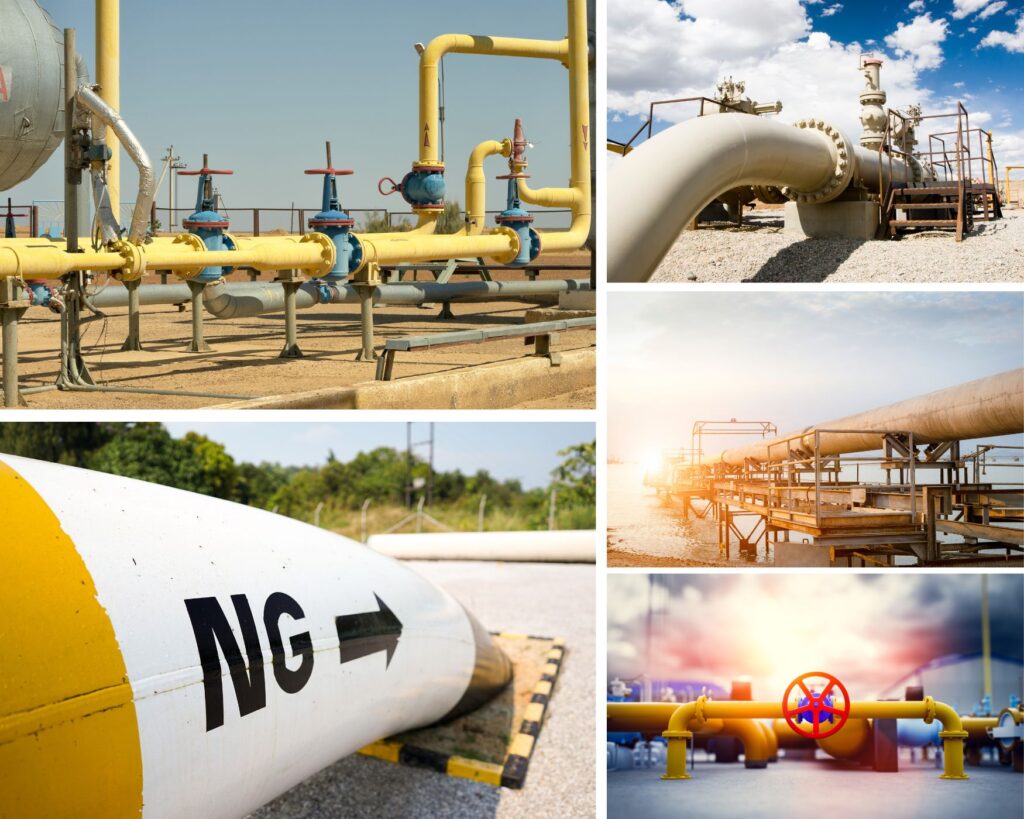
Advanced Manufacturing Capabilities
We have optimized our manufacturing processes to ensure consistent quality and reliability. Our state-of-the-art factories can produce continuous pipe lengths of up to 500 meters, significantly reducing the number of joints and potential leak points. For on-site projects, our mobile manufacturing plants enable the fabrication of customized pipes directly in the field. This eliminates the need for long-distance transportation and allows for seamless integration with existing infrastructure.
Continuous Monitoring Solutions
Early leak detection is crucial for minimizing methane emissions. We offer advanced monitoring systems that continuously scan pipelines for any signs of leakage. These solutions include:
- Fiber optic sensing cables
- Acoustic sensors
- Infrared cameras
- Laser-based detectors
Real-time data from these sensors is analyzed using machine learning algorithms to identify leaks quickly and accurately. This allows operators to respond promptly and prioritize repairs based on the severity of the leak.
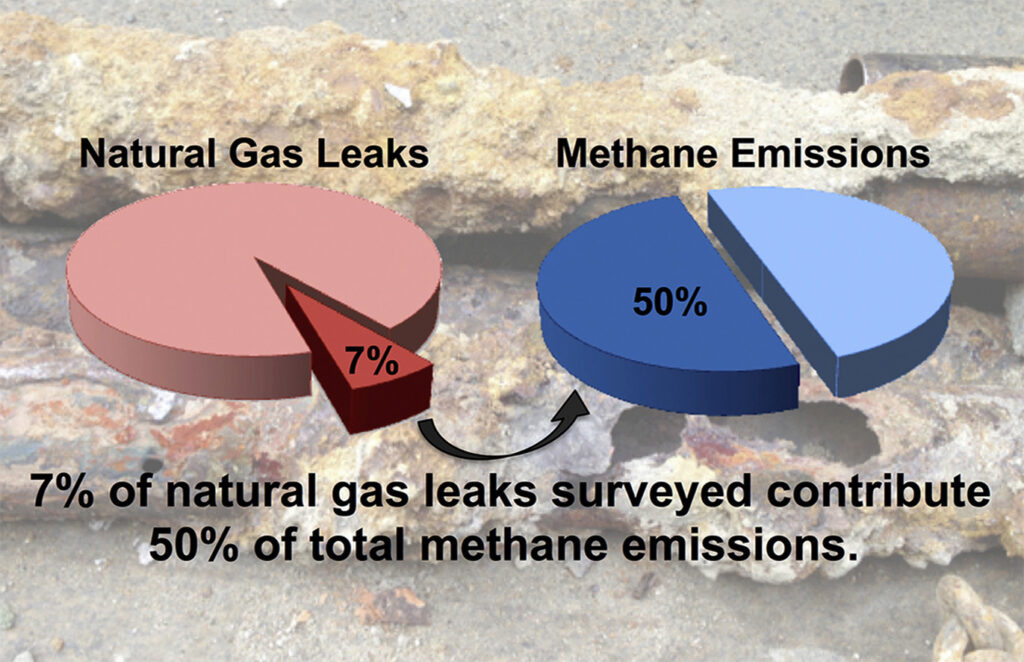
Non-Invasive Pipe Repair Techniques
When leaks do occur, our innovative relining technology enables trenchless repairs without the need for extensive excavation. We can create a new composite pipe within the existing pipeline, effectively sealing leaks and extending the infrastructure’s lifespan by 50+ years. This method is particularly valuable for addressing leaks in difficult-to-access locations or densely populated areas. It minimizes disruption to communities and ecosystems while providing a cost-effective and long-lasting solution.
Real-World Applications
Our leak prevention solutions have been successfully deployed across various industries, including:
| Industry | Application |
|---|---|
| Oil & Gas | Gathering lines, low-pressure pipelines |
| Mining | Slurry pipelines, water transportation |
| Water Utilities | Distribution mains, wastewater systems |
| Chemical Processing | Corrosive fluid handling, plant piping |
For example, in the mining sector, our corrosion-resistant pipes have helped clients optimize their water management systems while minimizing the risk of leaks and environmental impact. We have also collaborated with major cities to upgrade their aging gas distribution networks, ensuring safer and more efficient delivery to end-users.
The Path Forward
Preventing methane leaks from natural gas pipelines is a critical step towards mitigating climate change. At Nexa Pipe, we are committed to developing and deploying innovative solutions that make a tangible difference. However, we recognize that this is a collective effort that requires collaboration across industries, governments, and communities. We actively engage with stakeholders to raise awareness about the importance of leak prevention and share best practices. As we look to the future, we will continue to push the boundaries of pipeline technology. Our R&D team is exploring new materials, sensor technologies, and data analytics to further enhance our leak detection and repair capabilities. We are also investing in sustainable manufacturing practices to minimize our own environmental footprint. By working together, we can create a more resilient and sustainable pipeline infrastructure that supports the transition to a low-carbon economy. At Nexa Pipe, we are proud to be at the forefront of this transformation, delivering solutions that protect both the environment and public safety.
Take Action Today
If you are a pipeline operator, utility company, or industrial facility looking to reduce your methane emissions, we invite you to contact us to learn more about our leak prevention solutions. Our team of experts is ready to collaborate with you to develop a customized plan that meets your specific needs and goals. Together, we can make a meaningful impact in the fight against climate change, one pipeline at a time.
The environmental impact of methane leaks from aging pipeline infrastructure
The Invisible Climate Threat Lurking in America’s Pipelines
Beneath the surface of our cities and countryside, a vast network of aging pipelines quietly leaks a potent greenhouse gas into the atmosphere. Methane, the primary component of natural gas, packs 84 times the warming punch of carbon dioxide in the first 20 years after release. And U.S. pipeline infrastructure, with an average age of over 50 years, is letting millions of tons of it escape each year.
A Pervasive and Persistent Problem
The U.S. is crisscrossed by over 3 million miles of natural gas pipelines – enough to circle the Earth 120 times. This sprawling network delivers fuel to heat homes, power industries and generate electricity. But as pipelines corrode and degrade over time, they become prone to developing cracks and holes that silently seep methane. Estimates vary, but recent studies suggest U.S. pipelines leak 1.2 to 2.6 million metric tons of methane annually. That’s equivalent to the climate impact of 50 million cars – or 4% of total U.S. greenhouse gas emissions. Pipeline leaks account for an estimated 20% of methane emissions from oil and gas infrastructure. What makes pipeline methane uniquely problematic is that leaks can persist undetected for months or years. Unlike a ruptured oil pipeline that spews visible crude, methane is colorless and odorless in its natural state. Slow, steady seeps from buried pipelines often fall below the detection limits of standard monitoring equipment.
Aging Infrastructure Amplifies Risk
Over half of U.S. gas pipelines were installed before 1970. Older pipelines are predominantly made of leak-prone materials like cast iron, wrought iron and bare steel. Compared to modern plastic and protected steel, these antiquated pipes are more brittle and susceptible to corrosion, cracking and joining failures. As pipelines age, leak rates accelerate. One study found that cast iron distribution mains leak at 6 times the rate of plastic pipes. Another showed that gathering lines, which transport raw gas from wells, lose 4.5% of their methane – 8 times higher than EPA estimates. Older, lower-pressure distribution lines that bring gas directly to buildings appear to be the leakiest of all.
| Pipeline Type | Material | Average Age (Years) | Leak Rate |
|---|---|---|---|
| Distribution Mains | Cast/Wrought Iron | 70-100 | 238 scf/mile/yr |
| Distribution Mains | Bare Steel | 50-70 | 110 scf/mile/yr |
| Distribution Mains | Plastic | 10-40 | 37 scf/mile/yr |
| Transmission | All Types | 40-50 | 6.8 scf/mile/yr |
| Gathering | All Types | 30-60 | 4.5% of throughput |
Leak rates compiled from multiple studies. Scf = standard cubic feet. Older cities like Boston, New York, Philadelphia and Chicago still rely heavily on leak-prone pipes dating back to the early 1900s. In 2014, a study found 5,900 leaks across Boston’s aging network, some spewing methane at disconcerting rates. Replacing these pipes is a mammoth undertaking constrained by costs, regulations and public disruption.
An Underestimated Climate Threat
For years, official greenhouse gas inventories like the EPA’s have underestimated pipeline methane leakage. The agency’s calculations rely on limited, outdated data and don’t account for “super-emitters” – large leaks that contribute a disproportionate share of emissions but are rarely detected by standard surveys. Emerging research using advanced mobile and aerial sensors is revealing the true magnitude of the problem. A 2018 synthesis of over 400 site-level measurements concluded that the U.S. oil and gas supply chain leaks 60% more methane than EPA inventories report. For pipelines specifically, a 2020 study estimated that distribution mains leak up to 5 times more than the EPA assumes. This unaccounted-for methane hamstrings efforts to curb greenhouse gases. Leaks are eroding the climate benefit of switching from coal to natural gas. One analysis found that total leakage above 2.7% negates the near-term climate advantage of gas over coal in power generation. With some pipeline segments leaking well over that threshold, the climate math on gas looks increasingly shaky.
Stemming the Invisible Flood
Solving the pipeline methane problem will require a multi-pronged effort from industry and policymakers. A good start is phasing out leak-prone pipe materials. While progress has been made, over 30,000 miles of cast iron and wrought iron distribution lines remain in service. Accelerating their replacement with modern plastic or protected steel can substantially cut leaks. Better monitoring and data collection are also critical. Current federal pipeline safety regulations only mandate leak surveys every 1-5 years and allow operators to use outdated methods. Deploying advanced sensors and leak detection platforms can help identify and prioritize the worst leaks for repair. Making detailed pipeline leak data public can aid transparency and empower research. Ultimately, fixing methane leaks is one of the fastest, most cost-effective ways to slow the rate of warming. The IEA estimates that up to 50% of oil and gas methane emissions can be avoided at no net cost. For pipelines, one study found that repairing just the largest 8% of leaks would cut emissions by 30%. As calls intensify for swifter climate action, plugging pipeline leaks offers a ripe opportunity to deliver rapid results. The millions of miles of pipelines undergirding modern society have long been out of sight and mind. But the revelation of their prolific methane leakage is forcing us to confront this hidden climate threat. By ramping up efforts to measure, monitor and mend pipeline leaks, we can chart a clearer course to a more sustainable energy future. The solutions exist – what’s needed now is the will to implement them at scale.
Advanced technologies for detecting and quantifying pipeline methane leaks
The Tech Revolution Sniffing Out Pipeline Methane Leaks
In the battle against climate change, an invisible enemy has long evaded our best defenses. Methane, a potent greenhouse gas, silently seeps from aging oil and gas infrastructure at alarming rates. The biggest offender? The millions of miles of pipelines crisscrossing the nation. But a new wave of advanced technologies is now giving us the tools to sniff out and size up these elusive emissions.
The Blind Spot in Methane Monitoring
Historically, detecting pipeline methane leaks has been a hit-or-miss endeavor. Most leaks don’t pose an immediate safety risk, so operators have had little incentive to aggressively find and fix them. Federal regulations only require periodic surveys using outdated methods like flame ionization detectors or soapy water, which can miss a significant share of leaks. Even when leaks are detected, quantifying their emissions rate – a key factor in prioritizing repairs – is notoriously tricky. Methane is colorless and odorless, making direct measurement difficult. Estimates often rely on generic emission factors that can significantly understate the true magnitude of leakage. This patchy picture has contributed to a chronic underestimation of pipeline methane emissions. The EPA’s official greenhouse gas inventory, based on limited data from the 1990s, pegs the average leak rate of local distribution pipelines at 0.08%. But recent field studies using advanced sensors have measured leak rates up to 5 times higher in some systems.
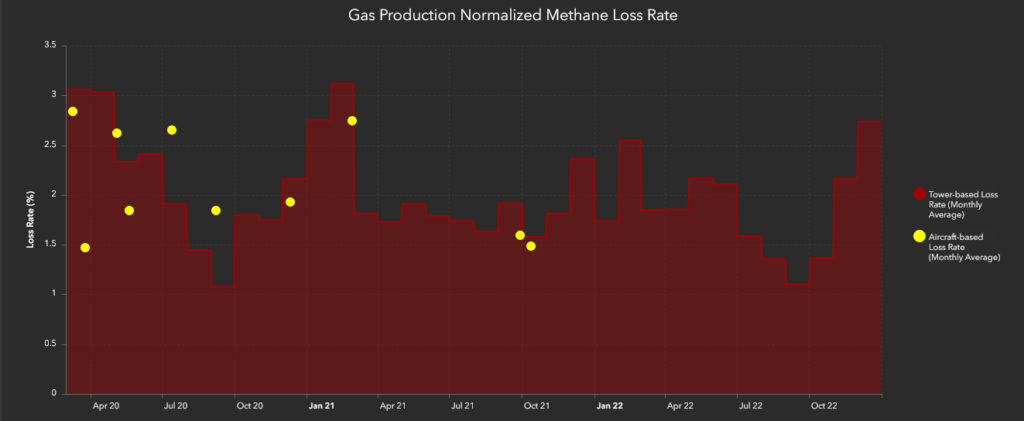
A New Wave of Leak Detection Tech
In recent years, a surge of innovation has transformed our ability to pinpoint and quantify pipeline methane leaks. From sensors mounted on drones and trucks to satellites peering down from space, an array of advanced technologies is now illuminating this invisible threat like never before. One of the most promising approaches is mobile monitoring. Sensors mounted on vehicles can cover large swaths of pipeline infrastructure far faster than foot patrols. The technology got a major boost in 2017 when Colorado State University researchers outfitted Google Street View cars with methane analyzers to map leaks across several cities. Aerial and drone-based platforms offer an even broader view. Aircraft equipped with infrared cameras can spot methane plumes from high altitudes, allowing rapid surveys of transmission pipelines spanning hundreds of miles. NASA’s AVIRIS-NG sensor has been used to pinpoint leaks in California’s gas fields with remarkable precision. Satellites are taking leak detection to the next level. Instruments like the European Space Agency’s TROPOMI can spot methane plumes from space with a resolution of just 5.5 km. In 2019, it detected a massive leak from the Yamal pipeline in Russia that was gushing 93 tons of methane per hour. Emerging satellites like MethaneSAT promise to further sharpen our view of global emissions.
| Technology | Platform | Coverage | Sensitivity |
|---|---|---|---|
| Advanced Infrared Cameras | Handheld, Vehicle, Drone, Aircraft | Local to Regional | High |
| Laser-based Analyzers | Vehicle, Drone, Aircraft | Local to Regional | Very High |
| Satellite Spectrometers | Satellite | Regional to Global | Medium to High |
| Continuous Stationary Monitors | Fixed Sites | Local | Very High |
Sensitivity refers to minimum detectable emission rate On the quantification front, simulation tools like FEAST are enabling more accurate estimates of leak rates. By modeling how methane disperses under different conditions, these tools can translate concentration readings from mobile sensors into emission rates. Machine learning is also being harnessed to predict leak risks and optimize repair schedules based on parameters like pipeline age and material.

Turning Data into Action
While these technologies are rapidly advancing our understanding of pipeline methane leakage, the real challenge is translating those insights into emissions reductions. A key step is integrating leak data into operator decision-making. Some utilities are already using advanced leak detection to prioritize pipeline replacement projects. But broader adoption will require policy support. In 2020, the PIPES Act directed the Pipeline and Hazardous Materials Safety Administration (PHMSA) to require operators to use advanced leak detection methods. PHMSA is now developing a rule that could mandate more frequent surveys and quicker repairs of non-hazardous leaks. Similar efforts are underway at the state level, with California and New York recently passing laws to curb pipeline methane. Transparent, accessible leak data will also be critical. Environmental Defense Fund is pushing for a centralized database of pipeline leaks to aid research and empower public oversight. Making detailed geospatial data on pipeline infrastructure and leaks publicly available, as the UK and other countries have done, could further accelerate innovation and accountability.
A Solvable Piece of the Climate Puzzle
The surge of advanced leak detection and quantification technologies is a rare bright spot in the fight against climate change. By rendering visible a long-hidden climate threat, these tools are providing a roadmap for swiftly and cost-effectively slashing methane emissions from pipelines. Repairing pipeline leaks is one of the most impactful actions we can take to slow the rate of warming. The IEA estimates that up to 70% of oil and gas methane emissions can be avoided with existing technologies, and over 40% at no net cost. In the U.S. alone, a study found that fixing leaks could cut pipeline emissions by 30-90% for less than a penny per thousand cubic feet of gas. But realizing this potential will require a concerted effort from industry, policymakers, and civil society. By deploying advanced technologies at scale, strengthening regulations, and improving data transparency, we can accelerate the transition to a cleaner, more sustainable pipeline system. The tools to solve this piece of the climate puzzle are now at our fingertips – it’s time to put them to work.
Regulatory policies and industry initiatives to reduce methane emissions from pipelines
Plugging the Methane Leaks: How Policymakers and Industry Are Tackling Pipeline Emissions
Methane, the primary component of natural gas, has long been hailed as a “bridge fuel” in the transition to a low-carbon future. But there’s a problem: millions of tons of it are silently leaking from the very infrastructure meant to deliver it. The vast network of pipelines crisscrossing the U.S. is a major source of these emissions, contributing to methane’s outsized impact on near-term warming. Now, a wave of regulatory policies and industry initiatives is aiming to plug these leaks and realize the full climate benefits of gas.
The Regulatory Landscape
At the federal level, methane regulations for oil and gas infrastructure have historically been patchy. The EPA has had voluntary programs to curb emissions since the 1990s, but mandatory rules were slow to materialize. That started to change in 2016 when the Obama EPA finalized the first federal standards for methane emissions from new oil and gas facilities. But the rules were short-lived – in 2020, the Trump administration rolled them back, arguing they were duplicative and burdensome.Now, methane is back on the regulatory agenda. In 2021, Congress passed a law restoring the Obama-era standards and directing the EPA to expand them to cover existing facilities. The agency is now crafting a new rule, expected later this year, that could be one of the most consequential climate policies of the Biden administration.For pipelines specifically, the Department of Transportation’s Pipeline and Hazardous Materials Safety Administration (PHMSA) is the primary regulator. Historically, PHMSA’s rules have focused more on safety than emissions, only requiring operators to fix leaks that pose an imminent hazard. But that’s starting to change.In the PIPES Act of 2020, Congress directed PHMSA to require pipeline operators to use advanced leak detection methods and repair more non-hazardous leaks. PHMSA is now developing a rule to meet that mandate, which could significantly cut emissions from the millions of small leaks that currently go unchecked.States are also stepping up. California, Colorado, and New Mexico have all passed regulations to rein in methane from oil and gas, including more stringent leak detection and repair requirements for pipelines. Other states like Pennsylvania and New York are considering similar measures.
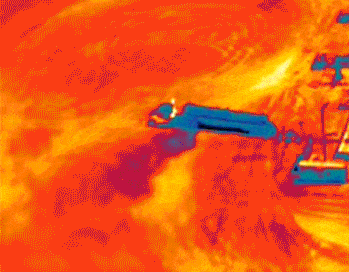
Industry Initiatives
Facing growing pressure from investors and the public, many oil and gas companies are also taking voluntary steps to curb methane emissions. In 2020, an industry-led partnership called the Oil and Gas Climate Initiative (OGCI) set a target to reduce the collective methane intensity of its members’ operations to 0.25% by 2025, with an ambition to reach 0.20%. That would be a significant improvement over the current industry average of around 0.7%.To meet these goals, companies are investing in a range of leak detection and repair technologies. ExxonMobil, for example, has deployed drones, aircraft, and satellites to scan for methane leaks across its U.S. operations. The company says it repaired over 1,000 leaks in 2020 and cut its methane emissions intensity by 15% compared to 2016.Other companies are pioneering new approaches to pipeline monitoring. PG&E, a California utility, is using advanced pressure sensors and flow analyzers to continuously monitor its distribution network for leaks. The company says the system has helped it cut methane emissions by 20% since 2015.Industry groups are also collaborating to share best practices and develop new technologies. The Pipeline Research Council International (PRCI), for example, is funding research on advanced leak detection methods like fiber optic sensing and satellite monitoring. The group is also developing a tool to help operators prioritize pipeline replacement based on leak risks.
| Company | Methane Reduction Target | Key Initiatives |
|---|---|---|
| ExxonMobil | 15% by 2020 (achieved), 40-50% by 2025 | Drones, aircraft, and satellite monitoring; leak detection and repair |
| Shell | 50% by 2025 | Infrared cameras, continuous monitoring, predictive maintenance |
| BP | 50% by 2050 | Drones, sensors, and satellite monitoring; green completions |
Plugging the Leaks: The Economics of Fixing Methane Emissions from Pipelines
Methane, the primary component of natural gas, is a potent greenhouse gas with 84 times the warming potential of carbon dioxide over a 20-year period. The oil and gas industry is one of the largest sources of methane emissions, with leaky pipelines being a significant contributor. While repairing these leaks comes at a cost, it also presents an opportunity for economic benefits that often outweigh the initial investment.
The Cost of Inaction
Before diving into the economics of leak repair, it’s essential to understand the cost of inaction. Methane leaks from pipelines not only contribute to climate change but also pose safety risks and financial losses for companies. According to a study by the Environmental Defense Fund, the U.S. oil and gas industry leaks an estimated 13 million metric tons of methane annually, equivalent to $2 billion worth of natural gas. This wasted gas could power 10 million homes and has the same 20-year climate impact as 140 coal-fired power plants. In addition to the direct financial losses, methane leaks also expose companies to potential regulatory fines, legal liabilities, and reputational damage. As governments and investors increasingly prioritize environmental sustainability, companies that fail to address their methane emissions may face higher costs of capital and reduced market share.
The Economics of Leak Repair
While plugging methane leaks requires upfront investment, studies show that many abatement measures are cost-effective and can even generate positive returns. The International Energy Agency (IEA) estimates that the oil and gas industry could reduce methane emissions by 75% using existing technologies, with up to 40-50% of these reductions having no net cost. In other words, the value of the captured gas would exceed the cost of the abatement measure over its lifetime. For example, regular leak detection and repair (LDAR) programs, which involve using specialized equipment to identify and fix leaks, have been shown to be highly cost-effective. A study by ICF International found that implementing quarterly LDAR in the U.S. oil and gas industry would reduce methane emissions by 40% at a cost of just $0.01 per thousand cubic feet (Mcf) of gas produced. Other cost-effective abatement measures include:
- Replacing high-emitting pneumatic devices with low- or zero-emitting alternatives
- Installing vapor recovery units on storage tanks
- Using plunger lifts and velocity tubing to reduce well venting
- Capturing gas during well completions and workovers
The table below summarizes the costs and benefits of various methane abatement measures in the U.S. oil and gas industry:
| Abatement Measure | Emissions Reduction (Bcf/year) | Cost ($/Mcf) | Net Benefits ($ million/year) |
|---|---|---|---|
| LDAR | 469 | 0.01 | 299 |
| Pneumatics | 241 | (0.37) | 565 |
| Compressors | 68 | 0.05 | 26 |
| Storage Tanks | 33 | (0.08) | 36 |
| Well Venting | 31 | 0.59 | (13) |
| Completions | 29 | (0.02) | 30 |
Source: ICF International, 2014. Bcf = Billion cubic feet. Negative costs indicate net savings. As the table shows, many abatement measures generate net economic benefits, even before considering the social benefits of reduced greenhouse gas emissions. When factoring in the social cost of methane, estimated at $1,500 per ton in 2020 by the U.S. government, the economic case for action becomes even stronger.
Barriers and Solutions
Despite the clear economic benefits, several barriers prevent oil and gas companies from fully addressing their methane emissions. These include:
- Information gaps: Many companies lack awareness about the extent of their methane emissions and the available abatement technologies. Improved monitoring and reporting standards can help close this gap.
- Split incentives: In some cases, the party responsible for fixing leaks (e.g., pipeline operator) may not directly benefit from the captured gas. Regulations that require leak repair or allow cost recovery can help align incentives.
- Capital constraints: While many abatement measures are cost-effective over their lifetime, they require upfront capital that may compete with other investment priorities. Targeted financial incentives, such as tax credits or low-interest loans, can help overcome this barrier.
- Weak regulations: In many jurisdictions, regulations on methane emissions are either lacking or poorly enforced. Strengthening regulatory standards and enforcement can create a level playing field and drive industry-wide action.
Governments and industry leaders have a critical role to play in overcoming these barriers. By implementing sound policies, sharing best practices, and investing in new technologies, they can unlock the economic and environmental benefits of methane abatement.
A Win-Win Opportunity
Fixing methane leaks from oil and gas pipelines is not just an environmental imperative but also an economic opportunity. By investing in cost-effective abatement measures, companies can reduce their greenhouse gas emissions, improve operational efficiency, and mitigate risk. As the world transitions to a low-carbon future, oil and gas companies that proactively address their methane emissions will be better positioned to thrive. They will not only be doing their part to combat climate change but also creating value for their shareholders and society as a whole. The time to act is now. With the right policies, technologies, and incentives in place, we can plug the leaks and unlock the economic benefits of methane abatement. It’s a win-win opportunity that we cannot afford to miss.
Designing Out Methane Leaks: Best Practices for Pipeline Infrastructure
Methane, the primary component of natural gas, is a potent greenhouse gas that traps over 80 times more heat than carbon dioxide in the short term. The oil and gas industry is one of the largest sources of methane emissions, with leaky pipelines being a significant contributor. While detecting and repairing leaks is crucial, preventing them in the first place through better design, construction, and maintenance practices can be even more effective and economical.
Designing for Leak Prevention
The first line of defense against methane leaks is designing pipelines with prevention in mind. This involves selecting the right materials, components, and configurations to minimize the risk of leaks over the pipeline’s lifetime. One key design consideration is the choice of pipe material. Traditional materials like cast iron and unprotected steel are prone to corrosion and cracking, which can lead to leaks. Modern pipeline designs often use plastic or protected steel, which are more resistant to corrosion and have lower leak rates. Another important design factor is the use of welded rather than threaded or flanged connections. Welded connections provide a continuous, leak-tight seal that is less likely to degrade over time. Where flanged connections are necessary, using high-quality gaskets and proper torqueing techniques can help prevent leaks. Designers should also consider the operating conditions of the pipeline, such as pressure, temperature, and flow rate, and select components that are rated for those conditions. Over-specifying components can provide an extra margin of safety against leaks. Finally, incorporating leak detection and monitoring systems into the pipeline design can help identify and locate leaks quickly, minimizing their duration and impact. These systems can range from simple pressure and flow sensors to advanced fiber optic cables that can detect leaks acoustically.
Constructing for Quality
Even the best-designed pipeline is only as good as its construction. Poor installation practices, such as improper welding, trenching, or backfilling, can introduce defects that lead to leaks down the line. To ensure quality construction, pipeline operators should:
- Use qualified and certified welders who follow industry best practices and standards, such as API 1104 for welding pipelines.
- Inspect welds using non-destructive testing methods, such as radiography or ultrasound, to detect any defects or discontinuities.
- Properly prepare the trench and bedding material to support the pipeline and prevent stress or damage during backfilling.
- Use appropriate backfill material and compaction techniques to avoid damaging the pipeline coating or creating voids that can lead to settling or shifting.
- Conduct hydrostatic pressure testing of the completed pipeline to verify its integrity and leak-tightness before putting it into service.
Operators should also have a quality assurance and quality control (QA/QC) program in place to monitor and document all aspects of the construction process. This includes material and equipment inspections, welding procedures and qualifications, and final testing and commissioning.
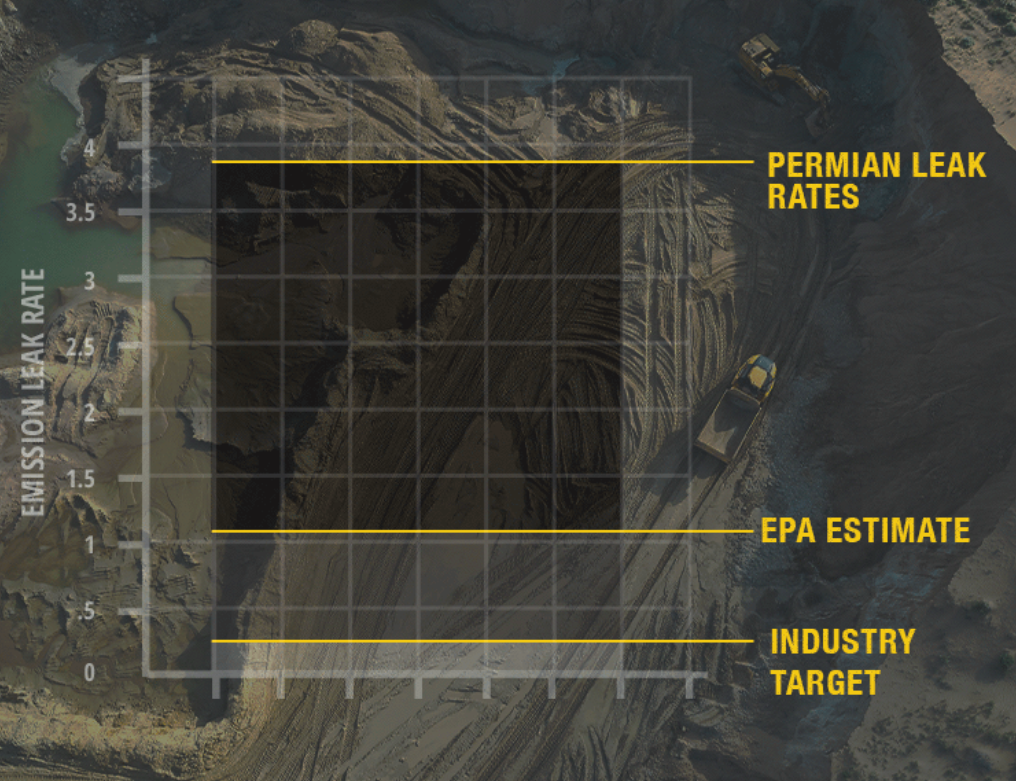
Maintaining for Reliability
Once a pipeline is in service, regular maintenance is essential to prevent leaks and extend its useful life. This involves a combination of inspection, testing, and repair activities to identify and address any potential issues before they result in leaks. One of the most effective maintenance practices is a leak detection and repair (LDAR) program. LDAR involves regularly surveying the pipeline for leaks using various methods, such as:
- Visual inspections: Walking the pipeline route to look for signs of leaks, such as dead vegetation, pooled liquids, or gas odors.
- Instrument inspections: Using handheld gas detectors or infrared cameras to detect methane leaks that may not be visible to the naked eye.
- Aerial inspections: Flying over the pipeline with aircraft or drones equipped with methane sensors to detect leaks over large areas.
- Continuous monitoring: Installing permanent sensors along the pipeline to continuously monitor for leaks and alert operators if one is detected.
When a leak is found, it should be promptly repaired using appropriate methods, such as replacing the leaking component, installing a clamp or sleeve, or welding the leak shut. The repair should be tested to ensure it is effective and documented in the operator’s records. In addition to LDAR, operators should conduct regular preventive maintenance activities, such as:
- Cathodic protection surveys to ensure the pipeline’s corrosion protection system is functioning properly.
- Valve maintenance to ensure valves are operating smoothly and sealing tightly.
- Pigging to remove any accumulated liquids or debris that could contribute to corrosion or blockages.
- Right-of-way maintenance to prevent damage from third-party activities or natural hazards like erosion or landslides.
By following a comprehensive maintenance program, pipeline operators can significantly reduce the risk of methane leaks and extend the safe and reliable service life of their assets.
Continuous Improvement
Preventing methane leaks from pipelines is an ongoing process that requires continuous improvement. As new technologies, materials, and practices become available, pipeline operators should evaluate and adopt them where appropriate to further reduce leak risks. Some emerging technologies that show promise for leak prevention include:
- Advanced materials: New pipeline materials, such as composite or self-healing coatings, can provide even greater resistance to corrosion and cracking.
- Smart pigs: In-line inspection tools equipped with advanced sensors and data analytics can detect and characterize leaks and other anomalies with high precision.
- Satellite monitoring: Satellites equipped with high-resolution methane sensors can detect and quantify leaks over large areas, helping operators prioritize repairs and track progress.
- Machine learning: Predictive maintenance models that use machine learning algorithms can analyze pipeline data to identify potential leak risks before they occur, allowing for proactive intervention.
Operators should also participate in industry forums and working groups to share best practices, lessons learned, and new technologies for leak prevention. Collaborating with peers, regulators, and other stakeholders can help drive industry-wide improvements and accelerate the adoption of effective leak prevention strategies.
A Proactive Approach
Preventing methane leaks from oil and gas pipelines is not only an environmental imperative but also a business opportunity. By designing, constructing, and maintaining pipelines with leak prevention in mind, operators can reduce their greenhouse gas emissions, improve safety and reliability, and lower their operating costs. While detecting and repairing leaks will always be necessary, a proactive approach to leak prevention can significantly reduce the frequency and magnitude of leaks over time. By investing in better materials, practices, and technologies, pipeline operators can demonstrate their commitment to environmental stewardship and position themselves for success in a low-carbon future. The path to methane leak prevention is clear. Now it’s up to the oil and gas industry to embrace it and make it a reality. With the right mindset, tools, and collaboration, we can design out methane leaks and build a cleaner, safer, and more sustainable energy system for all.
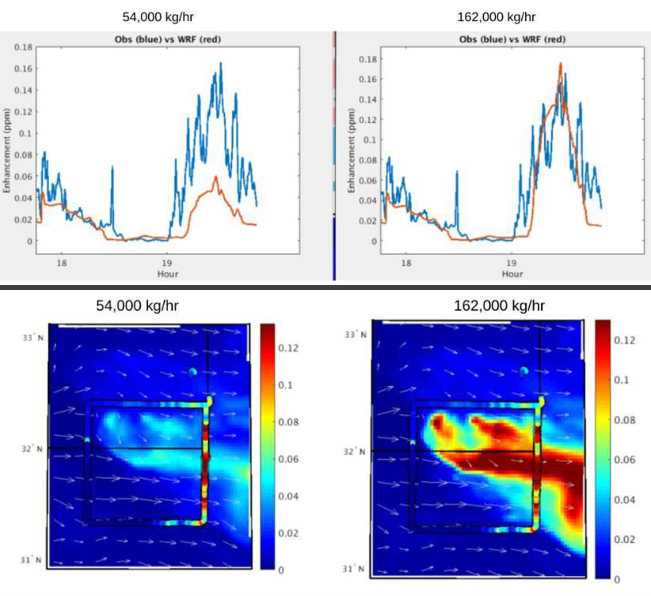
The Hidden Climate Threat: How Pipeline Methane Leaks are Fueling Global Warming
When it comes to climate change, carbon dioxide (CO2) often takes center stage as the main culprit. However, there’s another greenhouse gas that’s been quietly contributing to global warming, and it’s leaking from the very infrastructure that powers our modern world: methane from natural gas pipelines. Methane, the primary component of natural gas, is a potent greenhouse gas with over 80 times the warming potential of CO2 in the first 20 years after its release. Despite its shorter atmospheric lifespan compared to CO2, methane’s outsized impact on near-term warming makes it a critical target for climate mitigation efforts.
A Pervasive and Persistent Problem
The oil and gas industry is one of the largest sources of anthropogenic methane emissions, accounting for around 22% of global methane emissions from human activities. Within the industry, leaky pipelines are a significant contributor, releasing methane at various points along the natural gas supply chain, from production wells to distribution lines. The scale of the problem is staggering. In the U.S. alone, the natural gas pipeline network spans over 3 million miles, enough to circle the Earth 120 times. Much of this infrastructure is aging and prone to leaks, with some pipelines dating back to the early 1900s. A study by the Environmental Defense Fund estimated that the U.S. oil and gas industry leaks around 13 million metric tons of methane annually, equivalent to the climate impact of 140 coal-fired power plants. But the problem isn’t limited to the U.S. Globally, the oil and gas sector emitted over 70 million tons of methane in 2020, according to the International Energy Agency (IEA). That’s more than the total energy-related CO2 emissions of the European Union. And with global natural gas consumption projected to grow in the coming decades, driven by rising energy demand and a shift away from coal, the methane leak problem is set to worsen unless urgent action is taken.
The Climate Impact
The climate impact of methane leaks from pipelines is significant and far-reaching. Methane is the second-largest contributor to global warming after CO2, responsible for around a quarter of the total warming to date. Over a 20-year period, methane traps over 80 times more heat in the atmosphere than the same amount of CO2, making it a potent short-term climate forcer. This means that reducing methane emissions from pipelines and other sources can have an outsized impact on slowing the rate of warming in the near term. In fact, a recent study found that cutting methane emissions by 45% by 2030 could avoid 0.3°C of global warming by 2050, buying crucial time for longer-term CO2 reduction efforts to take effect. But the climate impact of methane leaks goes beyond just warming. Methane also contributes to the formation of ground-level ozone, a harmful air pollutant that can cause respiratory problems, damage crops, and exacerbate climate change by reducing the ability of plants to absorb CO2. A study by the United Nations Environment Programme found that reducing methane emissions could prevent over 250,000 premature deaths and 26 million tons of crop losses globally each year.
The Economic Cost
In addition to the environmental and health impacts, methane leaks from pipelines also come with a significant economic cost. The gas that escapes into the atmosphere represents lost revenue for oil and gas companies, as well as a wasted resource for consumers. The IEA estimates that the methane leaked from global oil and gas operations in 2021 had a market value of around $19 billion, based on average natural gas prices. That’s enough gas to power over 180 million homes for a year. In the U.S. alone, the value of leaked gas is estimated at $2 billion annually, according to a study by the Natural Resources Defense Council. But the economic cost of methane leaks goes beyond just the value of the lost gas. There are also indirect costs, such as the damage to crops and public health from ozone pollution, as well as the broader economic impacts of climate change, such as more frequent and severe natural disasters, sea level rise, and reduced agricultural productivity. A recent study by the Environmental Defense Fund estimated that the social cost of methane, which accounts for these indirect impacts, is around $1,500 per ton emitted. Based on this estimate, the methane leaked from the U.S. oil and gas industry each
